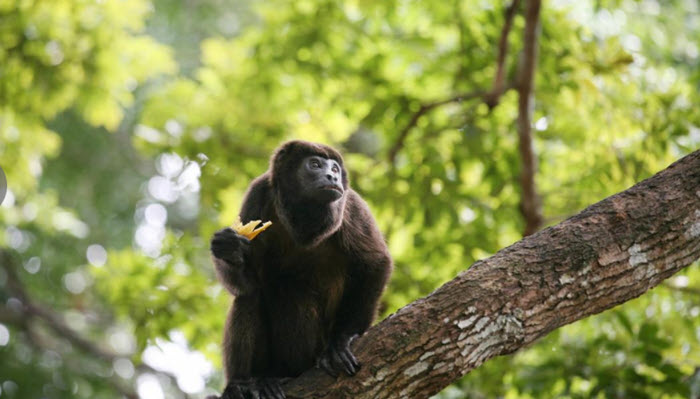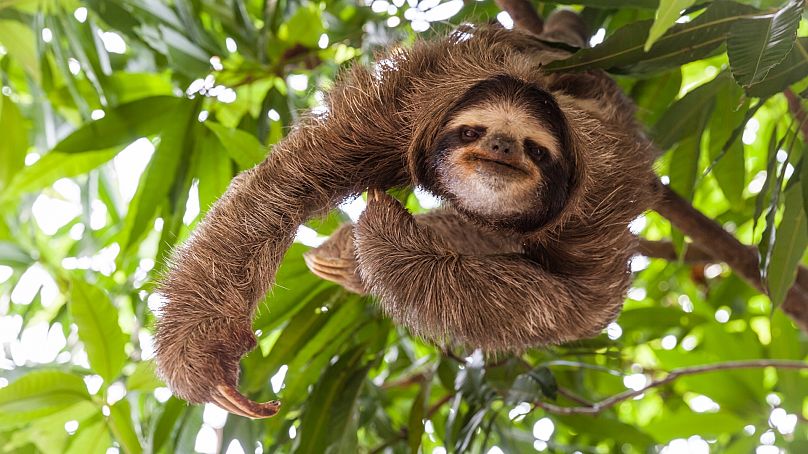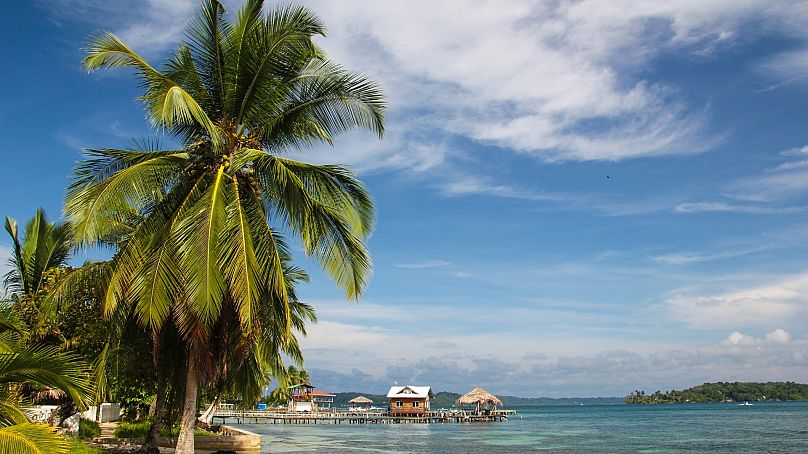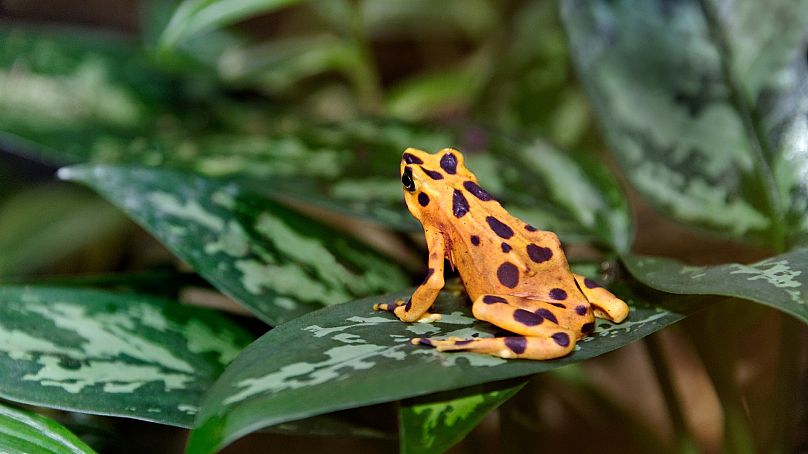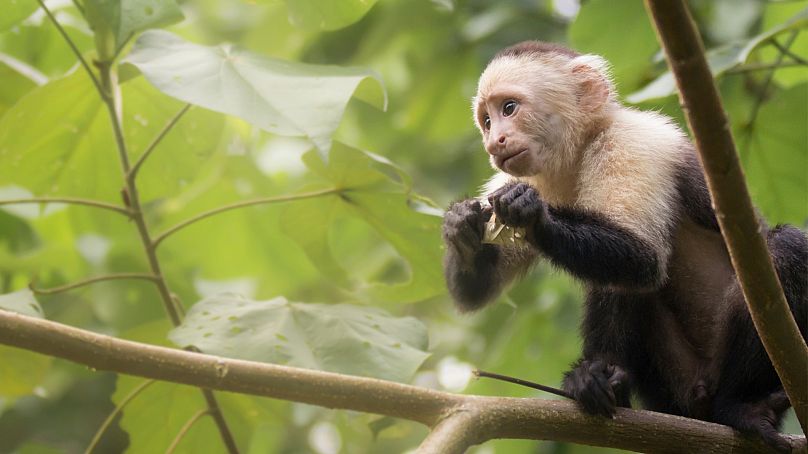On the isthmus (a narrow strip of land) linking central and south America, lies Panama, a diverse country with unique flora and fauna. Home to hundreds of tropical birds, rare ecosystems, and, of course, the famous Panama canal which cuts through the middle of the mainland.
With so much nature to protect, Panama is keen to attract eco-tourists looking to immerse themselves in the landscape and engage with the natural world. As well as the mainland, Panama also has a whopping 1,400 islands to its name, with land masses in both the Caribbean and the Pacific.
What’s the best time of year to visit Panama?
Panama is effectively divided in two by the Tabasará Mountains, which form a central spine down its middle. This makes its Caribbean and Pacific ecosystems quite different from one another, with higher levels of rainfall throughout the year on the Caribbean side.
Tourists looking for sunnier days should visit between mid-December and March, while April to early December is a great time of year to explore Panama’s lush landscape and see migratory birds and wildlife.
With all these natural wonders to see and so many options for eco-tourists, we’ve selected our favourite places to explore Panama’s unique and diverse landscapes.
What are the travel restrictions for Panama?
Travellers from any country are no longer required to take a COVID-19 test or quarantine on arrival as long as they’ve registered digitally via the Panama Electronic Affidavit and can physically present a vaccination card.
This card needs to show that you’ve had both doses, with the second dose being no later than 14 days ago.
If you are travelling from what Panama deems to be a low risk country, and you haven’t been fully vaccinated you will need to present a negative PCR or antigen test taken 72 hours before arrival.
If you’re coming from a country classified as high risk – which at the moment includes the UK – and are not fully vaccinated, you will have to present a negative PCR test and quarantine for 72 hours at an approved hotel. You will then have to take another PCR test to prove your negative status.
The other countries on Panama’s high risk list are: South Africa, India and countries in South America.
Full details on Panama’s travel rules are here.
How to explore the Panama Canal
One of the most famous maritime trade routes in the world, the Panama Canal connects the Atlantic and Pacific oceans. The man-made canal opened in 1914 and has been a vital waterway for global shipping ever since.
What you may not know, though, is that the Panama Canal is also a great place for watersports and birdwatching. With kayaking, canoeing and boat tours on offer, you can explore this famous waterway and the surrounding tropical rainforests.
Keen kayakers are likely to see capuchino, howling and spider monkeys, as well as sloths and kingfishers, to name just a few. The Smithsonian Tropical Research Institute has been based in the Panama Canal for almost a century, making the area’s unique ecosystems some of the most intensively studied in the world.
The STRI also has two museums in the area: The Panama Canal Museum and the Biomuseo, where visitors can learn more about Panama’s biodiversity and the history of the area.
What is there to see in Panama City?
Panama City sits on the Pacific side of the country at the opening of the canal, and is full of huge skyscrapers but these are balanced out with lots of palm trees.
If hip neighbourhoods are your thing, head to Casco Viejo. This little district is UNESCO protected and full of cute boutiques, bars, and of course, this being Panama – coffee shops. It’s here you can sip Panama’s most expensive brew, Geisha coffee. Originally from Ethiopia, the Geisha coffee beans grow very well in the Panama climate and due to their exceptional taste can sell for as much as $1000 per pound.
Trek the Highlands of Chiriqui
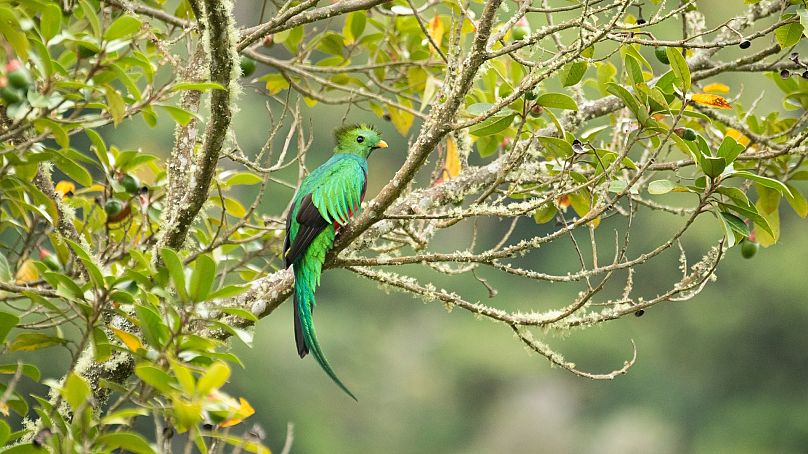
On the isthmus (a narrow strip of land) linking central and south America, lies Panama, a diverse country with unique flora and fauna. Home to hundreds of tropical birds, rare ecosystems, and, of course, the famous Panama canal which cuts through the middle of the mainland.
With so much nature to protect, Panama is keen to attract eco-tourists looking to immerse themselves in the landscape and engage with the natural world. As well as the mainland, Panama also has a whopping 1,400 islands to its name, with land masses in both the Caribbean and the Pacific.
What’s the best time of year to visit Panama?
Panama is effectively divided in two by the Tabasará Mountains, which form a central spine down its middle. This makes its Caribbean and Pacific ecosystems quite different from one another, with higher levels of rainfall throughout the year on the Caribbean side.
Tourists looking for sunnier days should visit between mid-December and March, while April to early December is a great time of year to explore Panama’s lush landscape and see migratory birds and wildlife.
With all these natural wonders to see and so many options for eco-tourists, we’ve selected our favourite places to explore Panama’s unique and diverse landscapes.
What are the travel restrictions for Panama?
Travellers from any country are no longer required to take a COVID-19 test or quarantine on arrival as long as they’ve registered digitally via the Panama Electronic Affidavit and can physically present a vaccination card.
This card needs to show that you’ve had both doses, with the second dose being no later than 14 days ago.
If you are travelling from what Panama deems to be a low risk country, and you haven’t been fully vaccinated you will need to present a negative PCR or antigen test taken 72 hours before arrival.
If you’re coming from a country classified as high risk – which at the moment includes the UK – and are not fully vaccinated, you will have to present a negative PCR test and quarantine for 72 hours at an approved hotel. You will then have to take another PCR test to prove your negative status.
The other countries on Panama’s high risk list are: South Africa, India and countries in South America.
Full details on Panama’s travel rules are here.
How to explore the Panama Canal
One of the most famous maritime trade routes in the world, the Panama Canal connects the Atlantic and Pacific oceans. The man-made canal opened in 1914 and has been a vital waterway for global shipping ever since.
What you may not know, though, is that the Panama Canal is also a great place for watersports and birdwatching. With kayaking, canoeing and boat tours on offer, you can explore this famous waterway and the surrounding tropical rainforests.
Keen kayakers are likely to see capuchino, howling and spider monkeys, as well as sloths and kingfishers, to name just a few. The Smithsonian Tropical Research Institute has been based in the Panama Canal for almost a century, making the area’s unique ecosystems some of the most intensively studied in the world.
The STRI also has two museums in the area: The Panama Canal Museum and the Biomuseo, where visitors can learn more about Panama’s biodiversity and the history of the area.
What is there to see in Panama City?
Panama City sits on the Pacific side of the country at the opening of the canal, and is full of huge skyscrapers but these are balanced out with lots of palm trees.
If hip neighbourhoods are your thing, head to Casco Viejo. This little district is UNESCO protected and full of cute boutiques, bars, and of course, this being Panama – coffee shops. It’s here you can sip Panama’s most expensive brew, Geisha coffee. Originally from Ethiopia, the Geisha coffee beans grow very well in the Panama climate and due to their exceptional taste can sell for as much as $1000 per pound.
Trek the Highlands of Chiriqui
Nicknamed ‘The Land of Eternal Spring’ the Highlands of Chiriqui are just a 40 minute drive from Panama’s most northern city, David, and close to the border with Costa Rica. Home to the country’s only volcano, Baru, this stunning landscape is full of twisting rivers, mountains and lush vegetation.
A perfect location for birdwatchers and horseback riders, the Highlands are also markedly cooler than the rest of Panama, so if you’re not a fan of the heat, this is the place for you.
Keen nature lovers may be able to spot strikingly coloured (and named) Resplendent Quetzals, Ochraceous Pewees and Black-thighed Grosbeaks to name just a few.
For caffeine lovers, there are also lots of coffee plantations in the area, which is well known for its citrus groves too.
Explore the unique ecosystems of Bocas Del Toro
If that’s not enough nature for you, the luscious ecosystem of Bocas Del Toro should be next on your list. One of the country’s biggest islands on its Caribbean coast, Bocas Del Toros is Panama’s first Mission Blue Hope Spot. An ecological programme led by Dr. Sylvia Earl, ‘Hope Spots’ are protected areas in ecologically sensitive parts of the world’s oceans, which Mission Blue are helping to rehabilitate and protect for future generations.
The archipelago has developed some unique species, flora and fauna due to its isolation from the mainland over the last 10,000 years. “It is now home to 200 species of tropical fish, more than 400 species of birds, 28 different amphibians, 4 kinds of sea turtles and 3 kinds of monkeys,” says Magda Cecilia Moreno from the Panama Tourism Board.
A must for nature lovers, there are also two caves to explore and the most diverse reef ecosystem in the Caribbean. Unsurprisingly, the island is home to one of Panama’s biggest diving centres, so visitors can suit up and see all these reefs up close and personal. And if you’re lucky, maybe a bottle-nose dolphin or two.
See golden frogs in El Valle de Anton
Sat, somewhat dramatically, in the crater of an extinct volcano El Valle de Anton is surrounded by lush green mountains and a cool 600 metres above sea level.
A great location for hikers, the area is full of trails to explore, including the Cerro Gaital, which is considered one of the toughest hikes in Panama.
The area also features the impressive Chorro El Macho waterfall, and is home to over 500 species of tropical birds. The golden frog that the area is most famous for is sadly thought to be extinct in the wild, but you can see some in the small Nispero Zoo, where they are seeking to breed and preserve the species. For orchid lovers, there’s also an Orchid Conservation Centre, where you can see over 100 different species of these striking flowers.
What are the best places to stay in Panama for eco tourists?
Panama offers visitors myriad ways to connect with the natural world through its tropical rainforests, mountains and waterfalls. For a truly natural experience though, you can stay in some of the country’s nature-based lodges and farms.
Tucked away in Bocas del Toro, the Tranquilo Bay Eco Adventure Lodge helps its guests experience the beautiful surroundings of the rainforest, whether that’s birdwatching from their canopy observation tower, paddle boarding and snorkeling in the bay, or hiking the local trails.
Also in the Bocas del Toro archipelago, La Loma Lodge and Chocolate Farm is only accessible by boat. Surrounded by tropical rainforests and mangroves, the Lodge has its own permaculture garden where they grow tropical fruits, and of course cacao trees.
When you’re not watching white-faced capuchin and western night monkeys feast on the cacao pods, you can learn how chocolate is processed and produced on the farm too.
Get Vaccinated and stay safe!!
